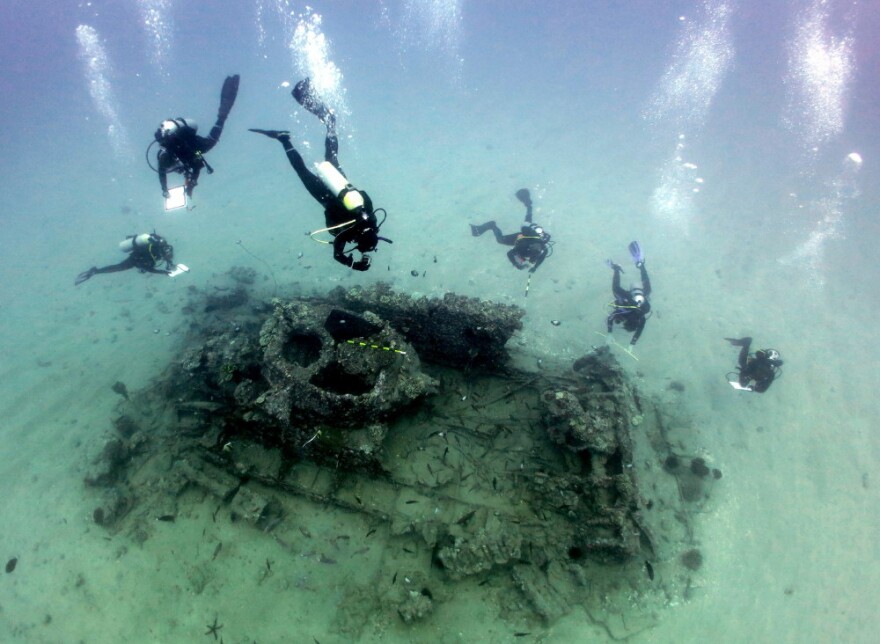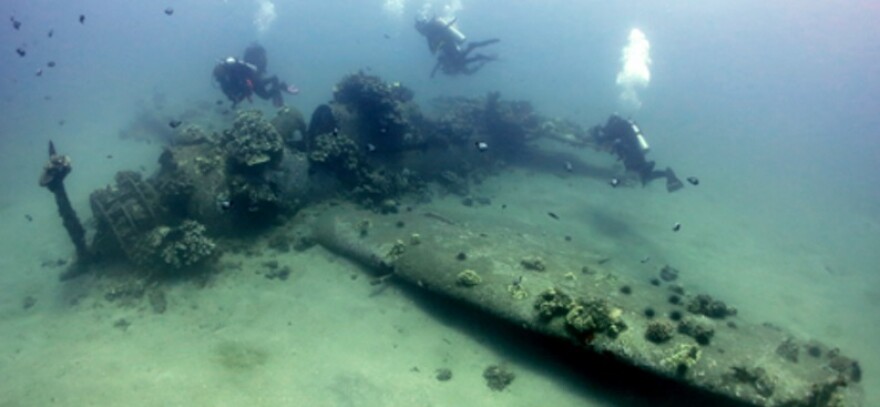A first-of-its-kind study of Hawai?i’s underwater cultural heritage has been completed. The vast inventory of shipwrecks and submerged aircrafts in Hawaiian waters serve as an underwater history museum waiting to be discovered. HPR’s Ku?uwehi Hiraishi reports.
I met Hans Van Tilburg at the Makai Research Pier in Waim?nalo.

Along the shore to our right, a dozen or so surfers are catching waves at Baby Makapu?u, to our left a family of four is fishing off the pier. But he is much more interested in what’s underwater.

“There’s actually the remains of the old steamship landing. In this area, there were steamship landings servicing local plantations, like the Waim?nalo Plantation right over there,” says Van Tilburg, “You know there was Bellow’s, Bellow’s Air Force Base, and so there are aircraft located right out there. Actually, in Hawai?i there's over 1,475 naval aircraft underwater that we know of.”

Van Tilburg is a maritime historian and underwater archeologist for NOAA, the National Oceanic and Atmospheric Administration. He oversaw a three-year study to inventory underwater cultural resources in Hawaiian waters. So everything from the remains of ancient Hawaiian fishponds to shipwrecks make up what he calls the submerged historical landscape.

“All of that history, for the most part is unseen. Because for hundreds of thousands of years you know sailors aren't writing books, they're sailing. And their history and their legacy is lost in shipwrecks under the sea,” says Van Tilburg, “Unless you find them and interpret them, those stories go untold.”

The study recorded more than 2,100 known or reported submerged resources, and is the first comprehensive assessment of Hawai?i’s underwater cultural heritage. Something Kiersten Faulkner says helps supplement a wealth of land based history in the Hawaiian Islands.
“So this new study on submerged cultural resources brings the ocean into that dialogue and into that understanding of being an island people and what that means when you’re surrounded by water,” says Faulkner.
Faulkner is the Executive Director of the Historic Hawai?i Foundation. The foundation focuses on historic preservation, which includes underwater resources.

“So what’s nice also about this study is it talks about when it needs to be known and when it needs to be held confidential or quiet, and only known by the families or the caretaker groups,” says Faulkner.
“For shallow water sites that are accessible, there might be an occasional diver who feels like some of that could be personal property and that’s a little bit of a problem,” says Van Tilberg, “You know visitation is great, we encourage that, but these are protected sites and things shouldn’t be taken off of them”
Van Tilburg says not everything underwater is historically significant. But this study is a first step in raising awareness of historical resources that require preservation. That could involve projects like undersea cables, channel dredging, or offshore energy development.




